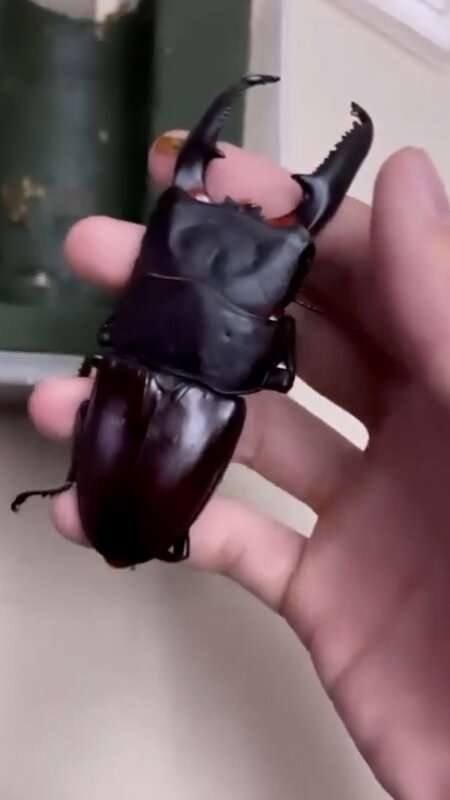Creepy-crawlies may not be everybody’s cup of tea, especially when they come with horns and are the size of your hand.
But they are passion for Ian Tang, a college student and beetle breeder from Taiwan who has condensed months of beetle hatching into short videos.
Speaking to Newsflash, he said: “My passion for beetles started when I was a child, I saw some 1:1 scale pictures of gigantic stag beetles from a publication of a Japanese beetle collector and was obsessed about these species.
“I started raising and breeding beetles in 2019, and created an Instagram account to share photos, videos and other fun stuff about beetles a year later.”
Time-lapse videos prepared by Ian show the months-long hatching process from a pupa to an adult compressed into just a few seconds.
The beetle can be seen shrugging off its outer skin to reveal the adult beetle underneath as its distinctive mandible ‘horns’ uncurl.
Footage shows that one of the bugs is the size of Ian’s hand.
Ian explained: “The beetle from the first video is a male Dorcus titanus palawanicus, also known as palawan stag beetle.
“This species is famous for its strong and long mandibles. Dorcus titanus palawanicus is the largest in length of other species of the genus Dorcus and is the second-biggest stag beetle in the world. The world record is 115.3mm.
“The second video is a male Lamprima adolphinae. This small species is well known for the diversity of colours.
“It takes six to 12 months for most of the stag beetles from Asia and Africa to emerge from larvae, some European species such as Lucanus cervus have a longer larva stage of 2 to 3 years.”

Ian added: “One of the most commonly asked questions from my viewer is how to distinguish the gender of stag beetles. The easiest way is to compare the mandibles. Males’ mandibles are usually thick and strong in order to fight others for mates. In contrast, females have small and sharp mandibles for digging wood or dust to lay eggs.”



